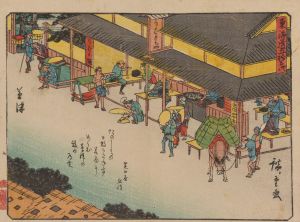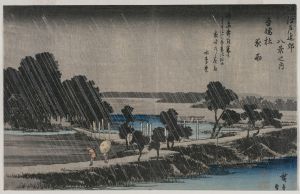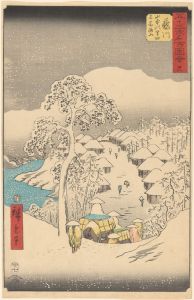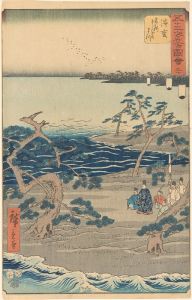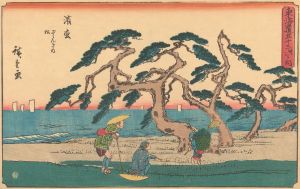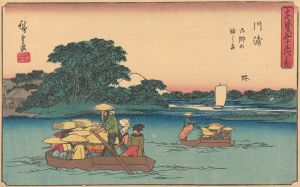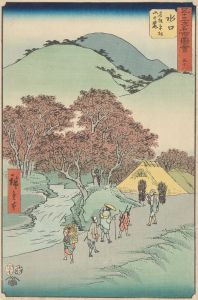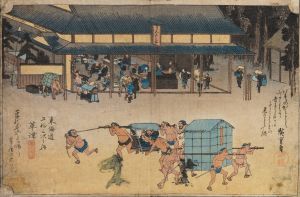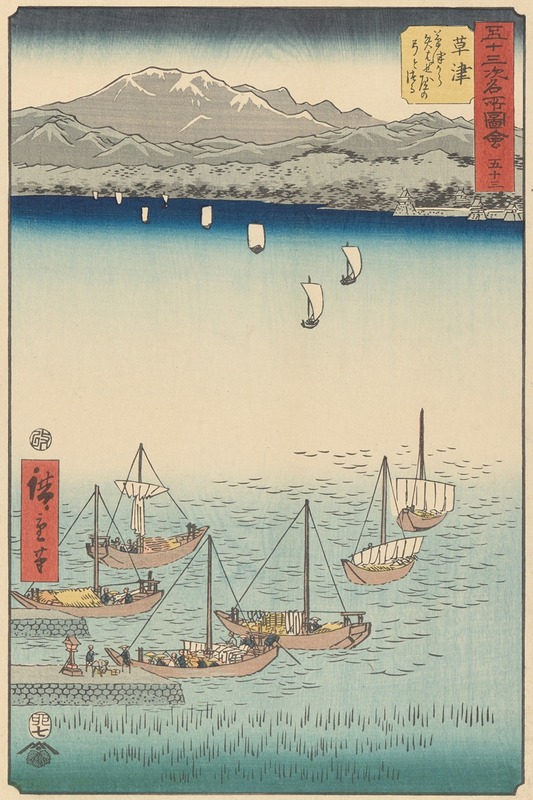
Kusatsu
A hand-painted replica of Andō Hiroshige’s masterpiece Kusatsu, meticulously crafted by professional artists to capture the true essence of the original. Each piece is created with museum-quality canvas and rare mineral pigments, carefully painted by experienced artists with delicate brushstrokes and rich, layered colors to perfectly recreate the texture of the original artwork. Unlike machine-printed reproductions, this hand-painted version brings the painting to life, infused with the artist’s emotions and skill in every stroke. Whether for personal collection or home decoration, it instantly elevates the artistic atmosphere of any space.
Kusatsu by Andō Hiroshige is a woodblock print from the renowned series "The Fifty-three Stations of the Tōkaidō" (Tōkaidō Gojūsan-tsugi no Uchi), which was created during the Edo period in Japan. Hiroshige, a master of the ukiyo-e genre, produced this series following his journey along the Tōkaidō road, a vital route that connected Edo (modern-day Tokyo) with Kyoto. This series, published in the 1830s, is celebrated for its vivid portrayal of the landscapes and daily life along this important thoroughfare.
The print "Kusatsu" is one of the stations depicted in the series and captures the essence of the post town of Kusatsu, which was a significant junction where the Tōkaidō and Nakasendō roads intersected. This strategic location made Kusatsu a bustling hub of activity, frequented by travelers, merchants, and officials. Hiroshige's depiction of Kusatsu is notable for its detailed representation of the lively atmosphere typical of such a crossroads.
In the Kusatsu print, Hiroshige employs his characteristic style, combining a keen eye for detail with a sense of movement and life. The composition typically includes travelers and locals engaged in various activities, set against a backdrop that reflects the natural beauty and architectural elements of the area. Hiroshige's use of color and perspective not only brings the scene to life but also provides insight into the cultural and social dynamics of the time.
Hiroshige's work is distinguished by its ability to convey a sense of place and time, capturing the transient moments of everyday life along the Tōkaidō. His prints are not merely artistic representations but also serve as historical documents that offer a glimpse into the Edo period's travel culture and the infrastructure that supported it. The Tōkaidō series, including the Kusatsu print, played a significant role in popularizing the ukiyo-e genre and influencing Western art, particularly the Impressionists, who admired Hiroshige's innovative use of perspective and color.
The "Kusatsu" print, like others in the series, was produced using the traditional ukiyo-e woodblock printing technique, which involved multiple artisans. Hiroshige would create the initial design, which was then carved into wooden blocks by skilled craftsmen. These blocks were used to apply ink to paper, layer by layer, to produce the final image. This collaborative process was typical of ukiyo-e production and contributed to the vibrant and detailed prints that Hiroshige is known for.
Hiroshige's "The Fifty-three Stations of the Tōkaidō" series, including the Kusatsu print, remains highly regarded for its artistic merit and historical significance. It provides a window into the Edo period's travel and culture, capturing the spirit of an era when Japan was on the cusp of modernization. Today, Hiroshige's works are celebrated worldwide, with the Kusatsu print being an exemplary piece that showcases his mastery of the ukiyo-e form and his ability to encapsulate the essence of a place in a single frame.





